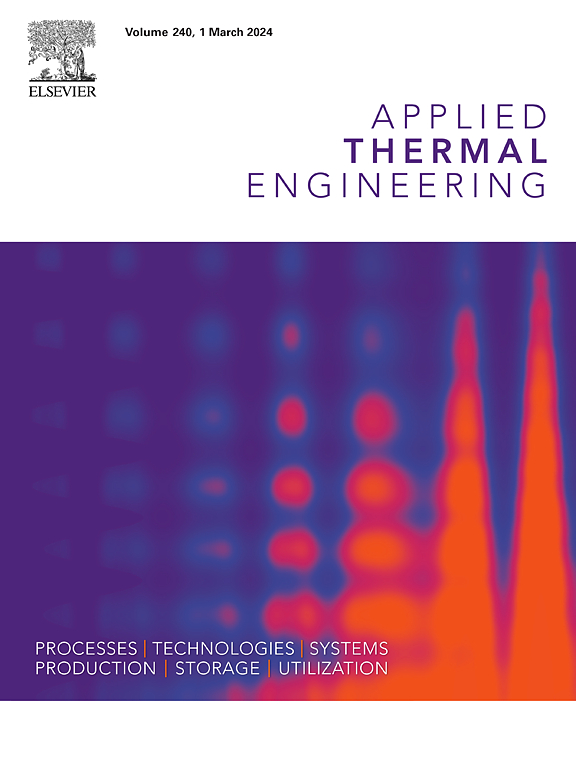Design and optimization of heat pipe-assisted liquid cooling structure for power battery thermal management based on NSGA-II and entropy Weight-TOPSIS method
IF 6.1
2区 工程技术
Q2 ENERGY & FUELS
引用次数: 0
Abstract
The thermal management performance of Battery Thermal Management Systems (BTMS) is critical for the operational efficiency and lifespan of lithium-ion batteries (LIBs). Excessive temperature or excessive temperature differences within the battery pack can significantly affect both performance and longevity. To address the issue of excessive temperature differences caused by the installation of a single liquid cooling plate at the bottom, this study proposes a hybrid cooling structure combining heat pipes and liquid cooling plates. Through numerical simulations, the impact of coolant volume concentration and mass flow rate on BTMS cooling performance was analyzed. The results indicate that, compared to traditional single liquid cooling plates, the heat pipe-liquid cooling BTMS offers significant advantages in cooling performance. To further enhance the cooling efficiency of the BTMS, a single-factor analysis was conducted to investigate the effects of flow channel width (A), flow channel depth (B), liquid cooling plate wall thickness (C), and corner radius of the turn region (D) on the cooling performance of the battery pack. Subsequently, orthogonal experiments were performed to identify three structural factors with the greatest impact on the cooling performance of the liquid cooling plate, which were then selected as optimization design variables. A Kriging surrogate model was established between the design variables and objective functions (maximum temperature of the battery pack and flow channel pressure drop), and the NSGA-II genetic algorithm was employed to optimize the structural factors of the liquid cooling plate. To eliminate potential subjective bias in selecting the optimal solution, the entropy weight-TOPSIS method was introduced for the selection process. Simulation results demonstrate that, compared to the initial BTMS, the optimized BTMS reduces the maximum temperature, temperature difference, and flow channel pressure drop of the battery pack by 2.29%, 6.02%, and 79.62%, respectively. The optimized BTMS significantly improves the operational performance of the battery pack while achieving exceptional cooling effects under low power consumption. The results of this study provide valuable theoretical and practical insights for the design and optimization of the Heat pipe liquid-phase hybrid cooling structure.
求助全文
约1分钟内获得全文
求助全文
来源期刊

Applied Thermal Engineering
工程技术-工程:机械
CiteScore
11.30
自引率
15.60%
发文量
1474
审稿时长
57 days
期刊介绍:
Applied Thermal Engineering disseminates novel research related to the design, development and demonstration of components, devices, equipment, technologies and systems involving thermal processes for the production, storage, utilization and conservation of energy, with a focus on engineering application.
The journal publishes high-quality and high-impact Original Research Articles, Review Articles, Short Communications and Letters to the Editor on cutting-edge innovations in research, and recent advances or issues of interest to the thermal engineering community.
 求助内容:
求助内容: 应助结果提醒方式:
应助结果提醒方式:


